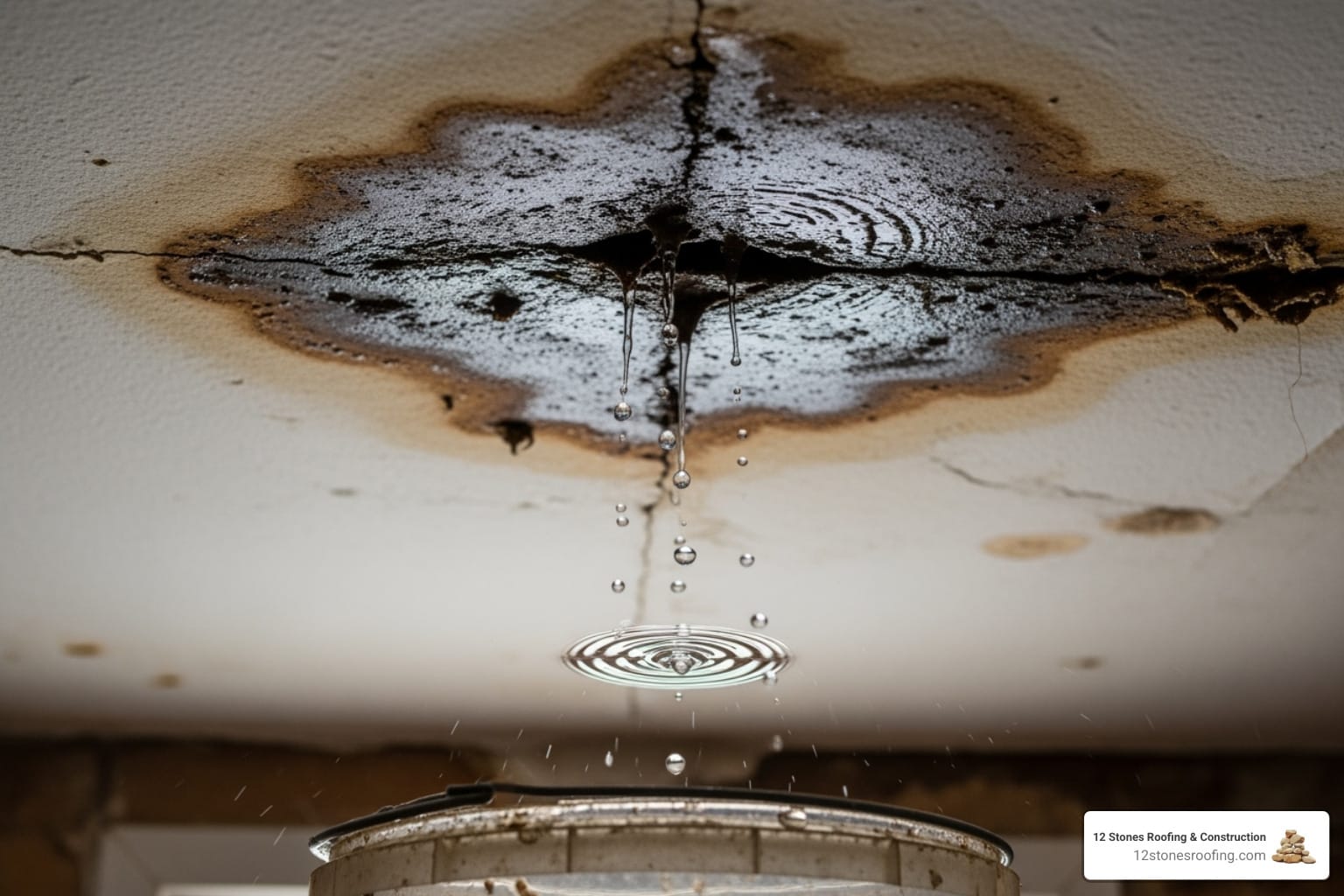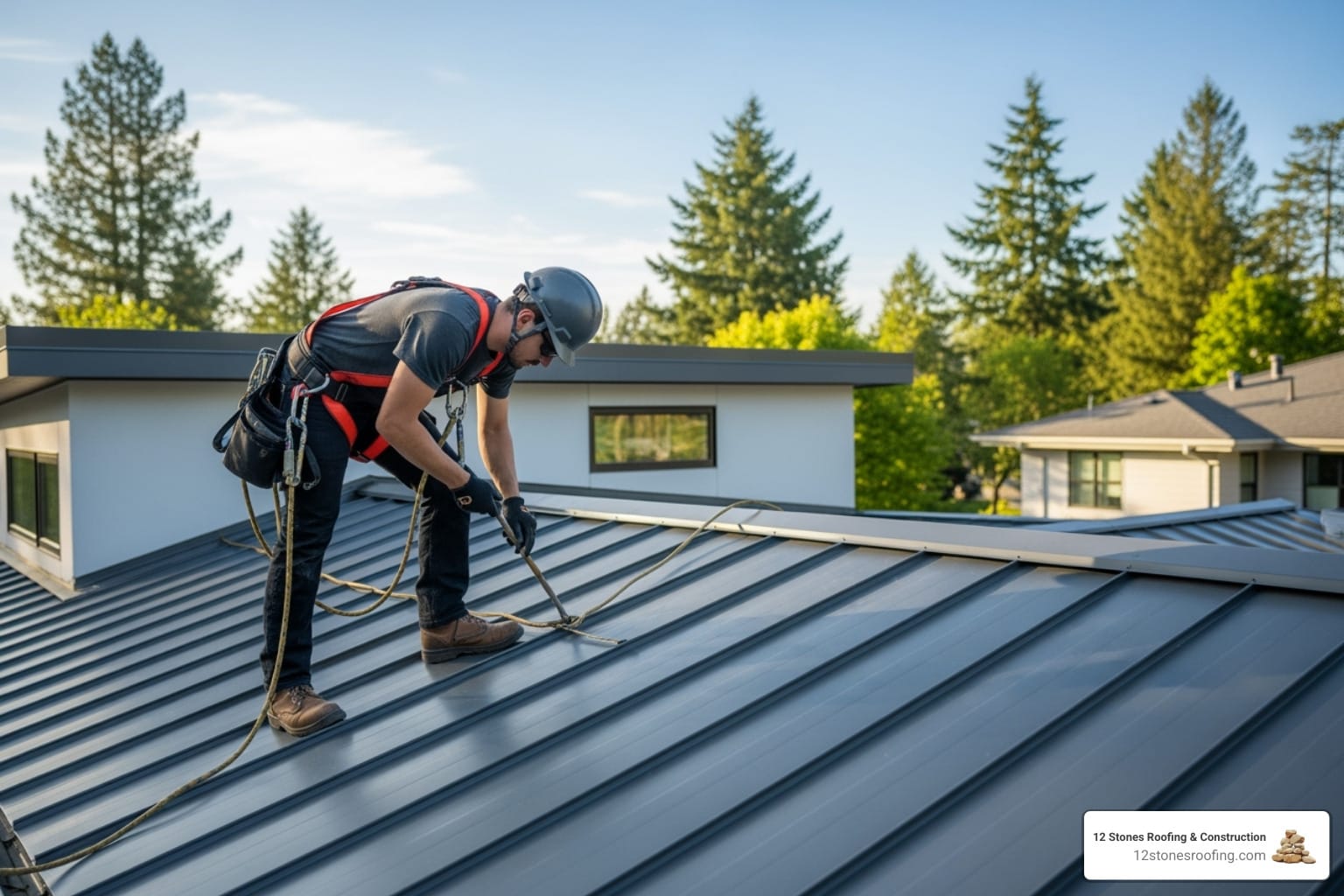Why Choosing a Top Rated Roof Replacement Matters for Texas Homeowners
A top rated roof replacement is a critical investment, protecting your home from Texas’s brutal weather. With average costs ranging from $5,890 to $12,800, choosing the right professional is essential. For Pasadena homeowners, partnering with a trusted roofing contractor who understands local climate demands ensures your investment is secure. This guide simplifies the process, covering everything from initial inspection to final walkthrough.
A top-rated project is characterized by a licensed and insured contractor, manufacturer certifications like GAF Master Elite®, comprehensive warranties, a proven local reputation, and transparent, detailed estimates. These elements guarantee quality and longevity.
I’m Jason Roberts, owner of 12 Stones Roofing & Construction. For over a decade, my certified team has guided hundreds of Gulf Coast homeowners through storm repairs and full replacements, ensuring every project meets the highest standards of quality and accountability.
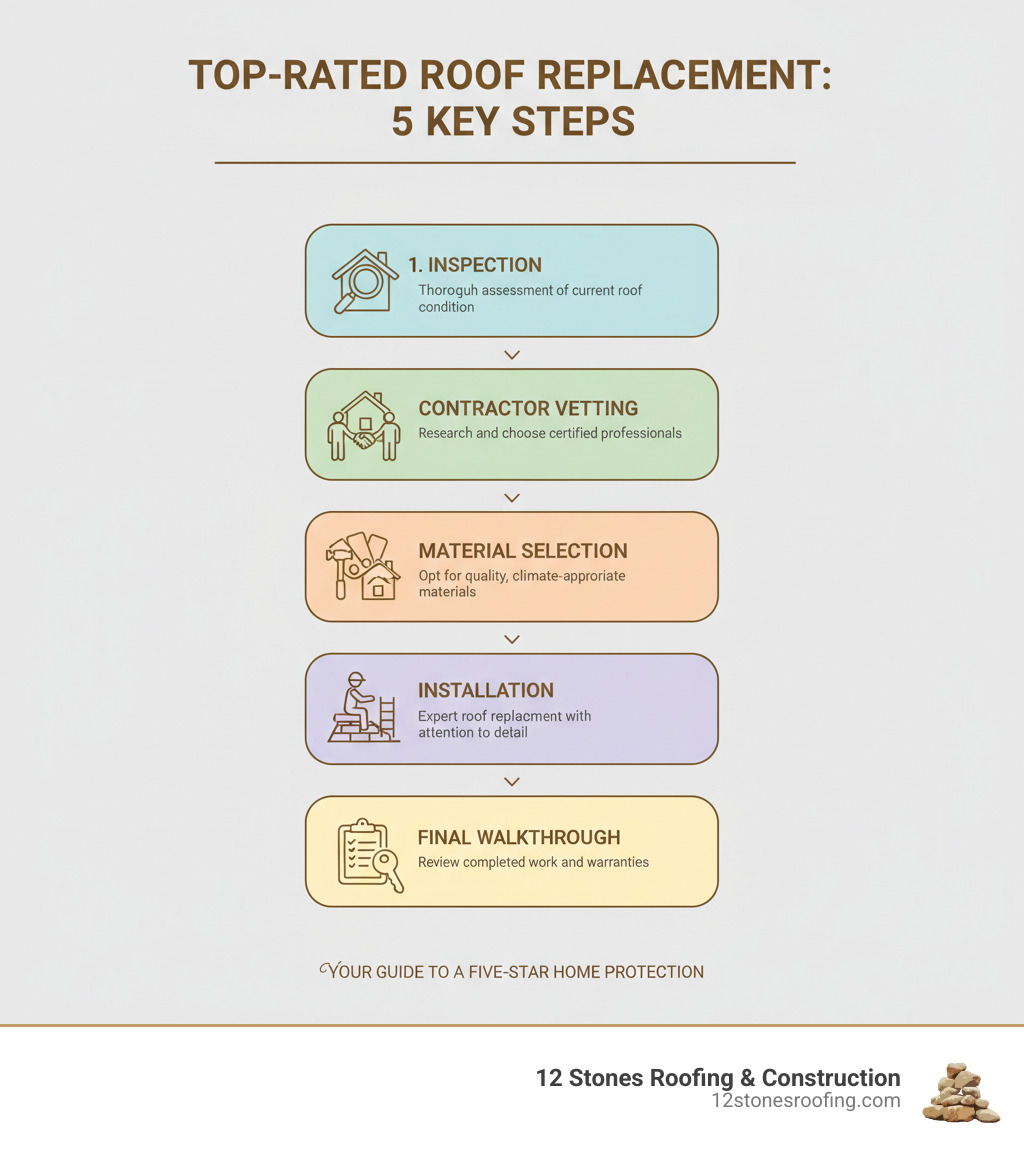
Is It Time for a Replacement? 7 Telltale Signs Your Roof Is Failing
Knowing when to repair versus replace your roof can save you thousands in potential damages. An asphalt shingle roof over 20 years old is often nearing the end of its functional life, especially under the intense Texas sun. Here are seven signs that your roof is failing and may require a top rated roof replacement.
- Advanced Age: An asphalt shingle roof over 20 years old is on borrowed time. Intense UV exposure in Texas can shorten its lifespan to as little as 15 years.
- Damaged Shingles: High winds and hail can crack, curl, or tear off shingles, creating direct paths for water intrusion.
- Granule Loss: Bald spots on shingles or an accumulation of black, sand-like granules in your gutters indicate the protective layer is gone.
- Algae or Moss Growth: Dark streaks (algae) or fuzzy green patches (moss) signal trapped moisture, which accelerates shingle decay.
- Sagging Deck: A drooping or sagging roofline is a structural emergency, often caused by rotted decking from a persistent leak.
- Chronic Leaks: If you’re chasing multiple leaks after every storm, the entire system is likely failing, and patches won’t solve the root problem.
- Interior Water Damage: Stains on ceilings or walls are the most obvious sign that your roof’s defenses have been breached.
Don’t wait for a small issue to become a catastrophe. If you see these warning signs, it’s time for a professional inspection. For more guidance on the replacement process, check out this guide to roof replacement in Fort Worth.
Decoding the Cost: What Factors Influence Your Roof Replacement Price?
There is no one-size-fits-all price for a top rated roof replacement, as the final cost depends on several interconnected factors. The average asphalt shingle roof replacement ranges from $6,000 to $14,000, but this can vary significantly. Understanding these variables will help you interpret your estimate.
- Roof Size and Square Footage: This is the primary cost driver. A larger roof requires more materials and labor hours.
- Pitch and Complexity: Steep roofs require extra safety equipment and take longer to complete. Roofs with multiple valleys, dormers, or skylights increase labor time and material waste.
- Roofing Material: Your choice of material is a major factor. Asphalt shingles are the most common and affordable, while metal and tile offer longer lifespans at a higher upfront cost.
- Labor Costs: Skilled labor typically accounts for about 60% of the total project cost. This pays for the expertise needed to ensure a correct, long-lasting installation.
- Tear-Off and Disposal: Removing the old roofing layers is essential for a quality job. The number of existing layers affects the time and cost of this step.
- Decking Condition: If the underlying plywood or OSB sheathing is rotted or damaged, it must be replaced. This is often an unknown cost until the old roof is removed.
- Permit Fees: Local municipalities like Pasadena, TX, require permits to ensure the work meets safety and building codes. These fees are part of the total cost.
Choosing Your Armor: A Comparison of Popular Roofing Materials
Selecting the right material for your top rated roof replacement is like choosing armor for your home. It impacts curb appeal, energy bills, and long-term durability against Texas weather. Here’s a breakdown of the most popular options.
- Asphalt Shingles: The most common choice, asphalt shingles are affordable and versatile, with a lifespan of 15-30 years. Modern impact-resistant varieties are ideal for Texas’s hail-prone areas. However, they are less energy-efficient and will lose protective granules over time.
- Metal Roofing: A lifetime investment, metal roofs last 40-70 years. They reflect solar heat, which can lower cooling costs, and are highly resistant to fire, wind, and hail. The upfront cost is higher, but the longevity and low maintenance often provide a superior return on investment.
- Tile Roofing: Offering best durability and a classic aesthetic, tile roofs can last over 50 years. They are fireproof and naturally energy-efficient. However, tile is heavy, requiring a reinforced roof structure, and can be fragile to walk on for repairs.
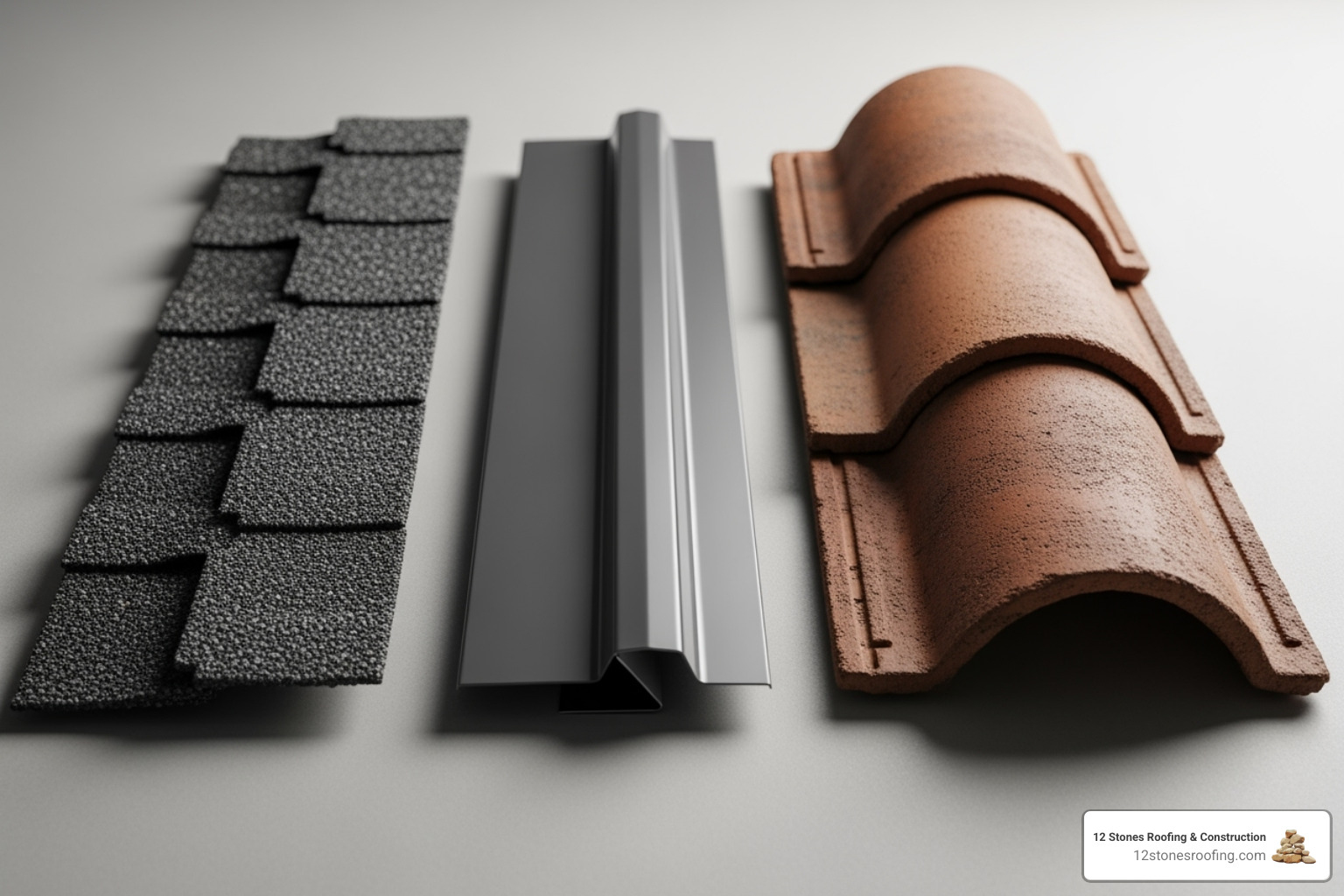
Texas Climate Considerations
Our climate demands specific material properties. For heat and energy efficiency, light-colored metal or cool-rated asphalt shingles reflect sunlight, reducing attic temperatures and AC strain. For hail and wind resistance, impact-rated shingles and properly fastened metal roofing offer the best protection against storm damage. Proper installation techniques are just as critical as the material itself to withstand hurricane-force winds. If you’re considering a material change, our guide on replacing a tile roof walks through the process.
How to Find a Top Rated Roof Replacement Contractor
Choosing the right contractor is the most critical step for a successful top rated roof replacement. A contractor’s qualifications and transparency are as important as the materials they install. Vetting your options thoroughly protects your investment for decades.
Verifying Credentials: The Non-Negotiables
A legitimate contractor will readily provide proof of their qualifications. Ask for these documents upfront.
- Licensing and Insurance: Verify they hold any required state or local licenses. Crucially, confirm they have at least $1 million in general liability insurance to protect your property and active worker’s compensation coverage to protect you from lawsuits if a worker is injured.
- Manufacturer Certifications: Top contractors earn certifications from manufacturers like GAF, Owens Corning, and CertainTeed. This proves they have been trained on proper installation techniques. The most prestigious is GAF Master Elite® status, an honor held by only 3% of roofers nationwide. This certification open ups access to the industry’s best warranties. Learn more about what a GAF Master Elite® Contractor is directly from GAF.
Evaluating Reputation and Work Quality
Credentials show what a contractor can do; reputation shows what they actually do.
- Online Reviews: Check Google and the Better Business Bureau (BBB). Look for patterns in customer feedback regarding communication, cleanup, and problem resolution. An A+ BBB rating indicates a history of integrity and customer satisfaction.
- Local References: Ask for a list of recent local clients you can contact. Inquire about their experience with the project timeline, crew professionalism, and overall satisfaction.
- Project Galleries: Review photos of past work on the contractor’s website to assess their craftsmanship and attention to detail. For more tips on vetting contractors, see this guide to roof replacement in Houston.
Understanding Warranties
A warranty is your protection against future problems. There are two types:
- Workmanship Warranty: This covers installation errors and should be offered for at least 10 years. Top-tier contractors offer lifetime workmanship warranties.
- Manufacturer Warranty: This covers defects in the roofing materials themselves. These range from 20 years to a limited lifetime. Clarify if the warranty is prorated, meaning its coverage value decreases over time, and if it’s transferable to a new homeowner.
The Estimate Process: What to Look For
A detailed, transparent estimate is a sign of a professional company. Avoid ballpark figures given without a thorough inspection.
Your estimate should be an itemized quote that includes:
- A Clear Scope of Work: Details on what will be replaced and how.
- Specified Materials: The exact brand and model of shingles, underlayment, etc.
- A Project Timeline: An anticipated start and completion date.
- A Payment Schedule: A reasonable deposit with the balance due upon completion.
- A Cleanup Plan: A commitment to protect your property and use magnetic sweepers for nails.
A vague proposal is a red flag. A professional is happy to answer questions and ensure you understand every line item. To see what a proper estimate includes, get a free roof replacement estimate.
The Roof Replacement Process: From Tear-Off to Final Inspection
Understanding the project steps for a top rated roof replacement can help set clear expectations. A professional installation follows a systematic process to ensure quality and safety from start to finish.
- Step 1: Property Protection: The crew begins by covering landscaping, windows, and siding with tarps. All movable items like patio furniture are relocated to a safe area.
- Step 2: Tear-Off and Deck Inspection: The old roof is completely removed down to the wood decking. This allows for a thorough inspection of the sheathing for any rot or water damage, with necessary repairs made on the spot.
- Step 3: Installing Protective Barriers: A new water-resistant underlayment is installed over the entire roof deck, followed by new metal flashing in critical areas like valleys, chimneys, and vents to seal against leaks.
- Step 4: New Material Installation: Your chosen roofing material is carefully installed according to strict manufacturer guidelines and local building codes to ensure optimal performance and longevity.
- Step 5: Thorough Cleanup: Debris is managed throughout the day. A final cleanup involves sweeping the area and using magnetic rollers to collect stray nails from your lawn and driveway.
- Step 6: Final Walkthrough: Once the job is complete, your project manager will conduct a final inspection with you to ensure every detail meets your satisfaction.
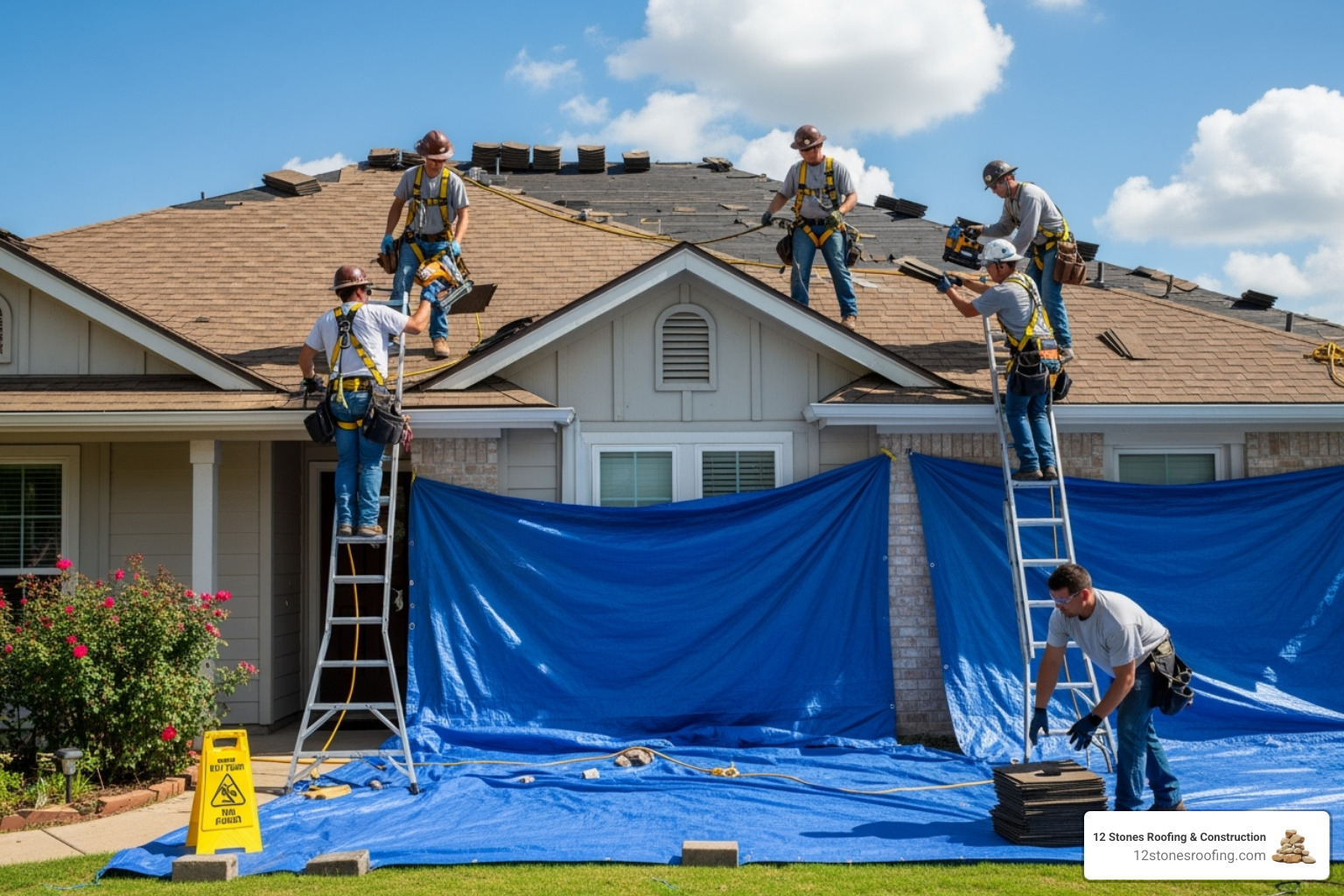
Most standard asphalt shingle replacements are completed in two to three days. Your contractor should provide a clear timeline and communicate any weather-related delays.
Navigating Insurance, Climate, and Other Key Considerations
A top rated roof replacement involves more than just installation; it requires navigating insurance claims and selecting materials suited for the Texas climate.
Handling Storm Damage
In Texas, severe weather is a constant threat. Hail and high winds can damage a roof of any age, making prompt action essential. After a storm, a professional inspection can determine the extent of the damage. Many experienced roofing contractors can assist with the insurance claim process by providing detailed documentation and meeting with your adjuster. This support helps ensure your claim is handled fairly and accurately, reducing your stress.
Choosing Materials for Texas Heat and Hurricanes
Our climate’s unique challenges dictate specific material needs:
- Intense heat and UV radiation: To combat extreme sun and UV radiation, choose materials with high solar reflectance. Light-colored metal roofs or “cool roof” asphalt shingles can lower attic temperatures and reduce energy bills.
- Hail and hurricanes: Impact-resistant shingles and robust metal roofing systems are essential for mitigating damage from hailstorms. For coastal areas, proper fastening techniques and reinforced materials are critical to resist hurricane-force winds and prevent wind-driven rain intrusion.
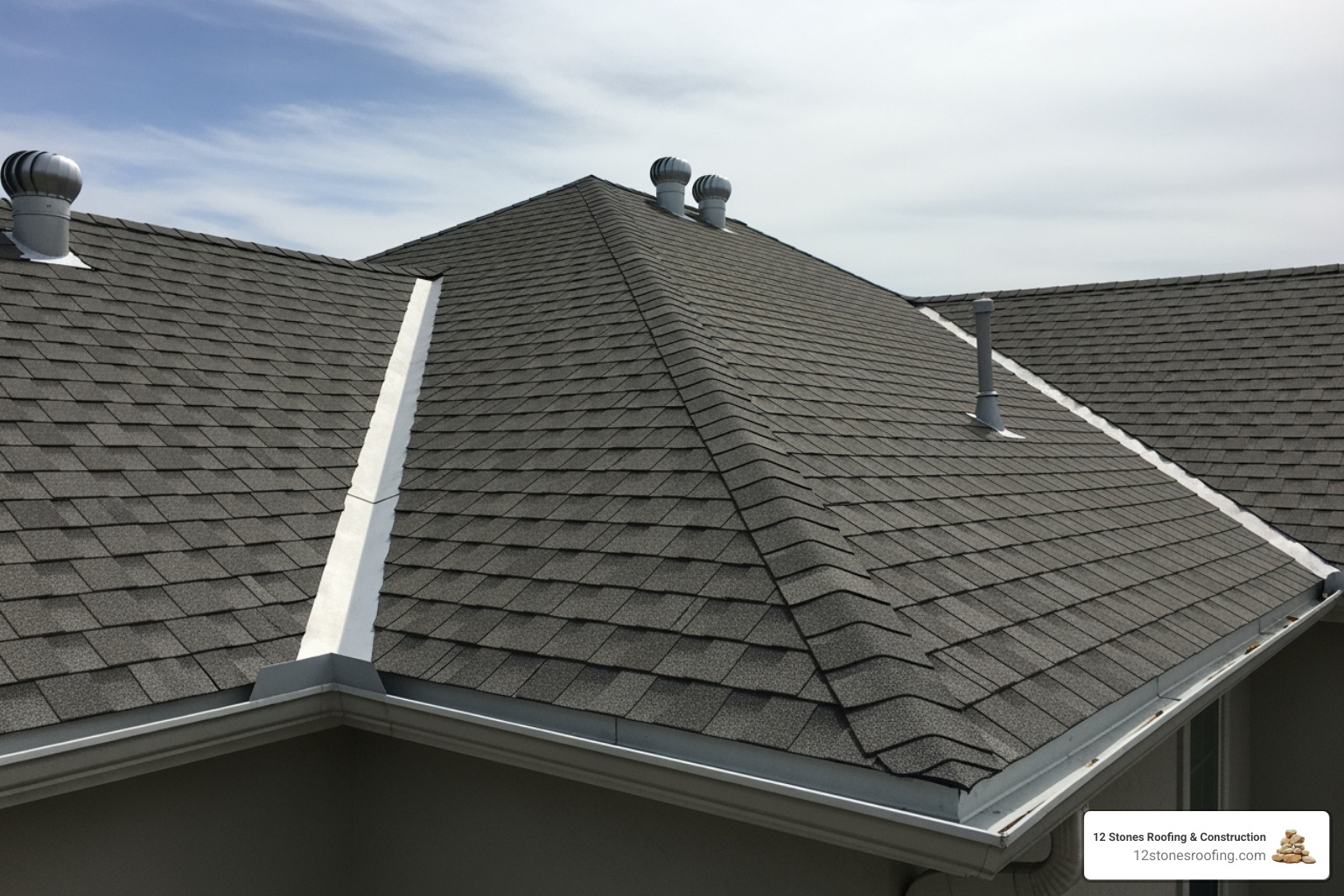
Understanding Residential vs. Commercial Needs
While both protect property, residential and commercial roofing have key differences. Commercial roofs are typically larger, flatter, and use specialized materials like TPO or EPDM to accommodate HVAC systems and foot traffic. They also face more stringent building codes related to fire safety and energy efficiency. Residential roofs are usually sloped and focus on aesthetics as well as drainage, using materials like shingles, metal, or tile. A qualified contractor will have distinct expertise in both areas.
Secure Your Home with a Trusted Pasadena Roofer
Choosing a contractor for a top rated roof replacement is a significant decision, but it doesn’t have to be overwhelming. By prioritizing verifiable credentials, a proven reputation, comprehensive warranties, and transparent estimates, you can confidently select a professional who will protect your home for decades.
For homeowners in the Pasadena area, 12 Stones Roofing & Construction delivers the expertise and quality needed for a five-star experience. We understand the demands of the Texas climate and are committed to meticulous installation and unwavering accountability. Our A+ BBB rating and manufacturer certifications reflect our dedication to protecting your investment with a roof built to last.
Ready to secure your home with a flawless new roof? Contact the top roofers in Pasadena, TX today for a free, no-obligation inspection. We provide honest expertise and detailed estimates to help you make an informed decision.



